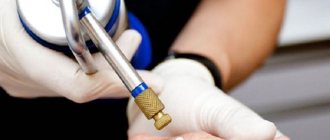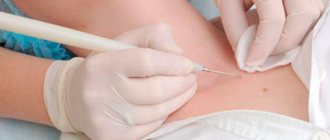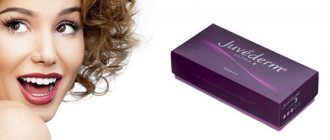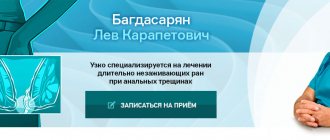Warts are a common skin disease. They can appear at any age due to infection with the human papillomavirus. Many strains of papillomavirus do not pose a health threat, but sometimes wart removal is still required. One of the most effective and safest methods is cryodestruction. If you provide proper care after removing a wart with nitrogen, there will be no noticeable marks left on the skin. The method has its disadvantages and advantages. Treatment of warts in Kyiv is offered by the Mediostar clinic, where patients can count on receiving qualified services.
How is cryodestruction performed?
A freezing agent called cryogen (usually liquid nitrogen) is used to directly apply extreme cold to unwanted skin growths. Cryogen is applied to the target area where it destroys skin tissue and also stimulates a local immune system response. Over time, the unwanted tissue will crust over and then fall off, leaving behind healthy tissue to heal and repair itself. Along with the cosmetic benefits (clearer skin), young patients and their parents can rest easy knowing that unwanted tissue growth no longer poses a potential health threat.
Although liquid nitrogen is the most commonly used cryogen, there are other substances that can be used depending on individual circumstances. Cryogen is applied with a thin stream from a medical spray bottle. A cotton swab can also be used as an applicator. Treated skin will naturally tingle a little and then usually blister. The pain experienced is surprisingly tolerable if the procedure is performed by an experienced dermatologist.
After a few days, a scab will form, which will dry out and fall off over the next week or two. In severe cases, repeat cryotherapy is used to ensure complete removal of the lesion with little chance of recurrence. Cryotherapy is an inexpensive, reliable and safe procedure, but should only be performed after an accurate dermatological diagnosis, as the procedure is not suitable, for example, for the treatment of aggressive melanoma.
What is the difference between cryodestruction of papillomas and warts?
Both papillomas and warts can be classified as skin formations, the removal of which is recommended by doctors. They are similar in structure and resemble slightly elongated, flat or thread-like protrusions. These are benign formations caused by the papilloma virus. Over time, they do not transform and cannot become malignant, but, nevertheless, they cause a lot of inconvenience: they look ugly, cling to clothes, and can be damaged.
The method for removing warts and papillomas is the same: you need to freeze the intracellular structures of benign formations, as a result of which the virus will die, and the skin can be cleansed painlessly. The cryodestruction technique in Moscow is no different from the removal mechanism in other cities: this method has long been tested and does not cause side effects. But by doing cryodestruction of warts at a competitive price at the SkinLaser clinic, you not only save, but also receive high-quality and prompt care, as well as preliminary professional consultation. The nitrogen exposure itself occurs quickly: 30 seconds for each formation. If the papilloma or wart is large, exposure to liquid nitrogen can last 1-2 minutes.
Contraindications
- Pregnancy
- Infectious and viral diseases
- Rash near the site of exposure
- Epilepsy
- Angiospasm
- Individual nitrogen intolerance
Recommendations after the procedure
- After cryodestruction, a bubble forms that should not be opened independently.
- After 4-5 days the bubble will burst on its own
- After opening the bubble, this place of nitrogen must be treated with an antiseptic
- A bactericidal patch should be applied to the site of the bubble.
- Swimming after the procedure is not prohibited - this can be done from the first day
Skin care after cryodestruction
The lesion does not require a bandage after treatment. The application site can be gently washed daily with salt water or saline. Additional care of the treated area is usually limited to a bandage to cover the area while healing, especially if the area is in an area where clothing will chafe and cause discomfort during healing.
The resulting blisters may be large and hemorrhagic (filled with blood). They should not be cut or stripped. If the size and inconvenience are significant, you can release the liquid with a sterile needle without damaging the bladder itself.
Once the blister has turned into a scab, Vaseline can be applied to soothe and moisturize the wound. Picking or cutting away the scab should be avoided to facilitate natural healing processes, allowing the scab to fall off in its own time. The rate of healing varies across different areas of the body, with scab usually remaining on the lower legs much longer than on the face or arms. In most cases, the end result will be completely normal skin without any signs of damage.
The cryodestruction procedure causes stinging, burning pain. Freezing lesions on the palms, soles, ears, lips and eyelids is more painful than anywhere else. Freezing the affected areas of the forehead and scalp can cause headaches. If necessary, you can give your child a pain reliever (ibuprofen).
Features of removing warts with liquid nitrogen
Cryodestruction is the process of destroying wart cells by exposing them to extremely low temperatures. Nitrogen is used as the main active ingredient. It liquefies at a temperature of –196 °C, and when it rises it becomes a gas again.
To remove a wart, it is treated with nitrogen using special equipment - a cryoprobe. Under the influence of such a low temperature, the water in the overgrown epithelial cells that make up the warts instantly freezes, expands and destroys them. This process can be quite painful, so in some cases local anesthesia is used.
Immediately after treatment, the wart turns white, then the operation site turns red and swelling appears. The formation of a blister filled with serous fluid and blood is a normal condition of the affected area. The process of its resorption usually takes one to two weeks. It all depends on the size of the wart, the depth and correctness of its treatment. Afterwards, a crust forms, which may peel off during the healing process. The period of complete recovery takes 2 weeks or more. Smooth, even skin should form at the site of the wart, the color of which will subsequently even out.
What complications can there be during the procedure?
- Immediate complications: pain, fainting, headache, swelling (especially periorbital), blistering.
- Delayed: infection, bleeding, slow healing.
- Long-term but temporary: hyperpigmentation, milia.
- Constantly: hypopigmentation, ectropion, atrophy, alopecia.
The procedure is usually safe if done carefully, although there are sometimes exceptions. For example, cryotherapy treatments near the eyes may cause the eyelid to swell for a day or two, although the swelling will soon subside.
What not to do
Consider the list of prohibited drugs for treating burns:
- Oils and oily products cannot provide healing. Attention! After a chemical burn or damage to the liquid nitrogen field, do not use oils or fat-containing products. This can aggravate the condition of the skin.
- Do not use caustic products containing alcohol. Many methods and remedies are proposed based on alcohol-containing products. Such procedures will lead to skin burns.
- When puncturing a blister, use a sterile needle. This minimizes the risk of infection.
- Do not overtighten the wound. A tight bandage impedes blood flow and slows healing.
- No need to remove the crust.
- It is worth consulting a doctor if the inflammatory process does not end after three days.
Prevention
prevention to prevent a blister from forming after removing a wart with liquid nitrogen. You can only protect yourself by choosing a more professional specialist. You should not get rid of growths yourself at home.
Removing growths is a rather risky procedure. It is worth treating it with care. With the wrong approach and incorrect processing, there is a possibility that the virus will enter the body and provoke inflammation.
After reading the article, it becomes clear how to behave after the procedure and protect the body from negative consequences.
Cost of the procedure
| Name | Price |
| Removal of molluscum contagiosum (as part of a consultation with a dermatologist) 1-3 units | 550 rub. |
| Removal of molluscum contagiosum (as part of a consultation with a dermatologist) 4-5 units | 700 rub. |
The information and prices presented on the website are for reference only and do not constitute a public offer. The services indicated in the Price List may be provided in other medical institutions. We ask you to clarify the address and cost of services in advance at the 24-hour call center by phone +7 (812) 331 17 04
Stages of cryodestruction of skin tumors
1. Inspection. Cryodestruction is not carried out until the type of tumor is accurately determined. Usually, an inspection is enough for this. If the doctor remains in doubt, the tissue sample is sent for histological examination, and the procedure is postponed.
2. Treatment of formation with liquid nitrogen. The doctor freezes the tumor with liquid nitrogen at a temperature of -195.8 °C. To do this, either cryodestruction equipment is used with automatic supply of cooled nitrogen through a nozzle, or a miniature applicator, which the cosmetologist lowers into a thermos with liquid nitrogen.
3. Necrosis of the growth. The treated area begins to turn pale. The patient feels a tingling sensation. The doctor checks the quality of the treatment to make sure that nitrogen has affected 100% of the neoplasm tissue.
The procedure takes about 15 minutes.
The main advantages of cryosurgery:
- Low cost of treatment
- No pain thanks to a combination of precision, freezing temperature and freezing power.
- Fast and effective treatment in intensive practice conditions
- No preparation time required
- Anesthesia is optional
- Excellent cosmetic results
- No need to remove sutures
- Minimal wound care
- Safe procedure
- Low risk of infection
- No bleeding
- No restrictions on physical activity
Contraindications and complications
Contraindications to cryosurgery include cryofibrinogenemia, cryoglobulinemia, Raynaud's disease, agammaglobulinemia, and multiple myeloma.
Serious complications from cryosurgery are rare. Hypopigmentation often occurs as a result of increased sensitivity of melanocytes to cold injury. This is much more noticeable in patients with darker skin. Deeper freezing can destroy hair follicles, which can lead to alopecia patches. Although rare, prolonged freezing can result in scarring caused by damage to the basement membrane and necrosis of the epidermis. Some degree of paresthesia occurs in a quarter of patients and may persist for one to three months. Permanent sensory loss is rare and is best prevented by avoiding cryosurgery of nerve trunks (eg, preauricular areas). The risk and extent of scarring, alopecia, hypopigmentation, and paresthesia can be reduced by reducing freezing time to less than 30 seconds.
Does cryodestruction hurt?
The freeze-thaw cycle immediately causes a localized, burning pain of moderate intensity, which after a few minutes gives way to a pulsating sensation and is accompanied by erythema and swelling, especially after facial procedures. After 8 hours, a serous or hemorrhagic blister usually forms, which flakes and dries within one to two weeks, forming a scab. Complete healing of benign neoplasms destroyed by cryodestruction usually occurs within two to four weeks, but can take up to six weeks for a large treatment area.
Most wounds do not require special aftercare. Bandages are best avoided. However, larger, more carefully treated lesions may require cleansing with soap and water once or twice a day. Sometimes large blisters may need to be opened. Excessive pain and swelling after the procedure can be reduced with a short course of a potent topical steroid cream.
What diseases can be treated with cryodestruction?
Dermatological _
Riosurgery allows you to treat a wide range of benign and precancerous skin conditions, such as:
- Angiomas
- Warts, including plantar warts
- Seborrheic and actinic keratosis
- Birthmarks
- Age and sun spots
- Dermatofibromas
- Molluscum contagiosum
- Condylomas
- Hemangiomas
- Acne
- Keloids
In most cases, a single application of cryodestruction is sufficient. Keloids require three times of treatment in two months, and dermatofibromas and ingrown toenails require two times of treatment in two months.











